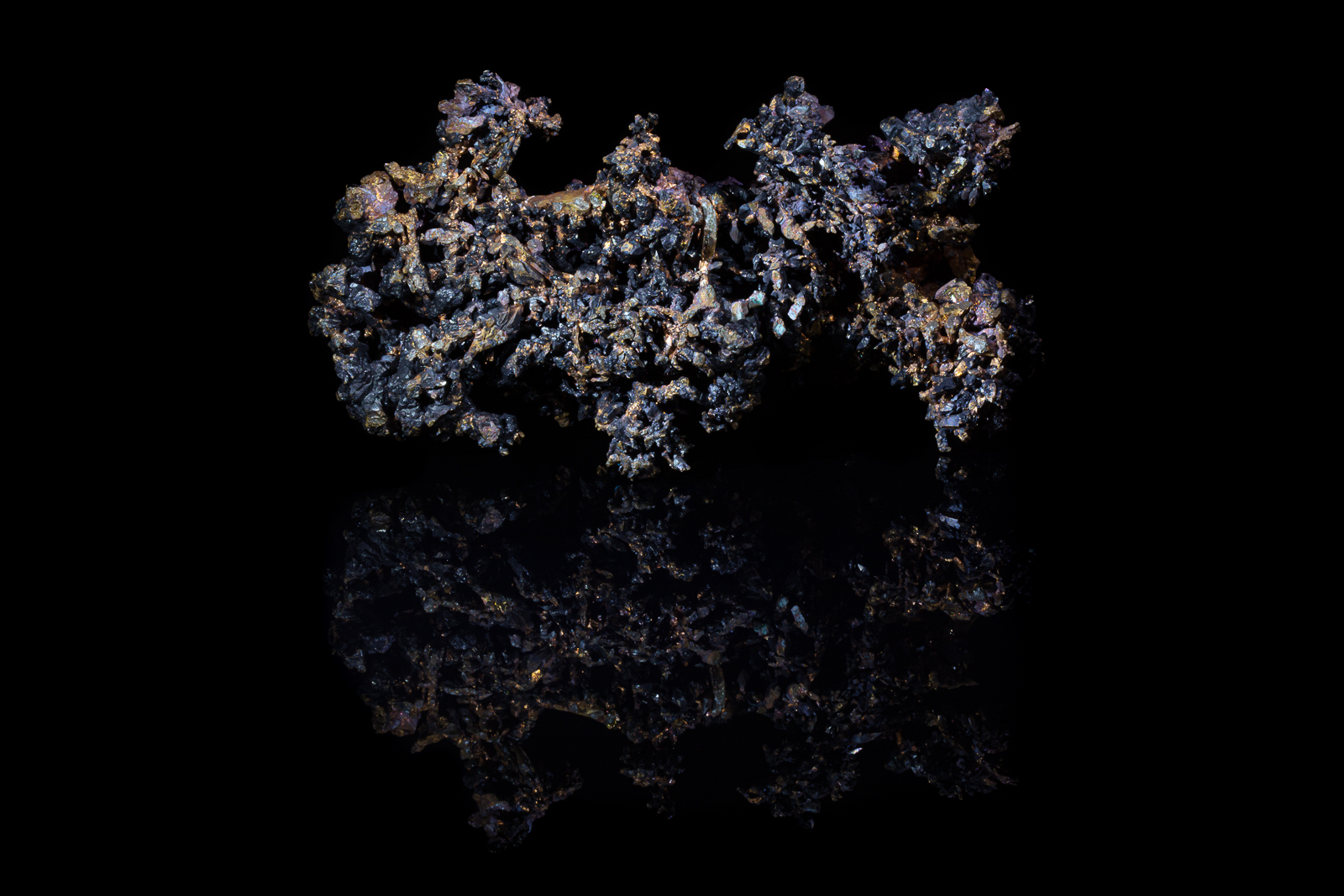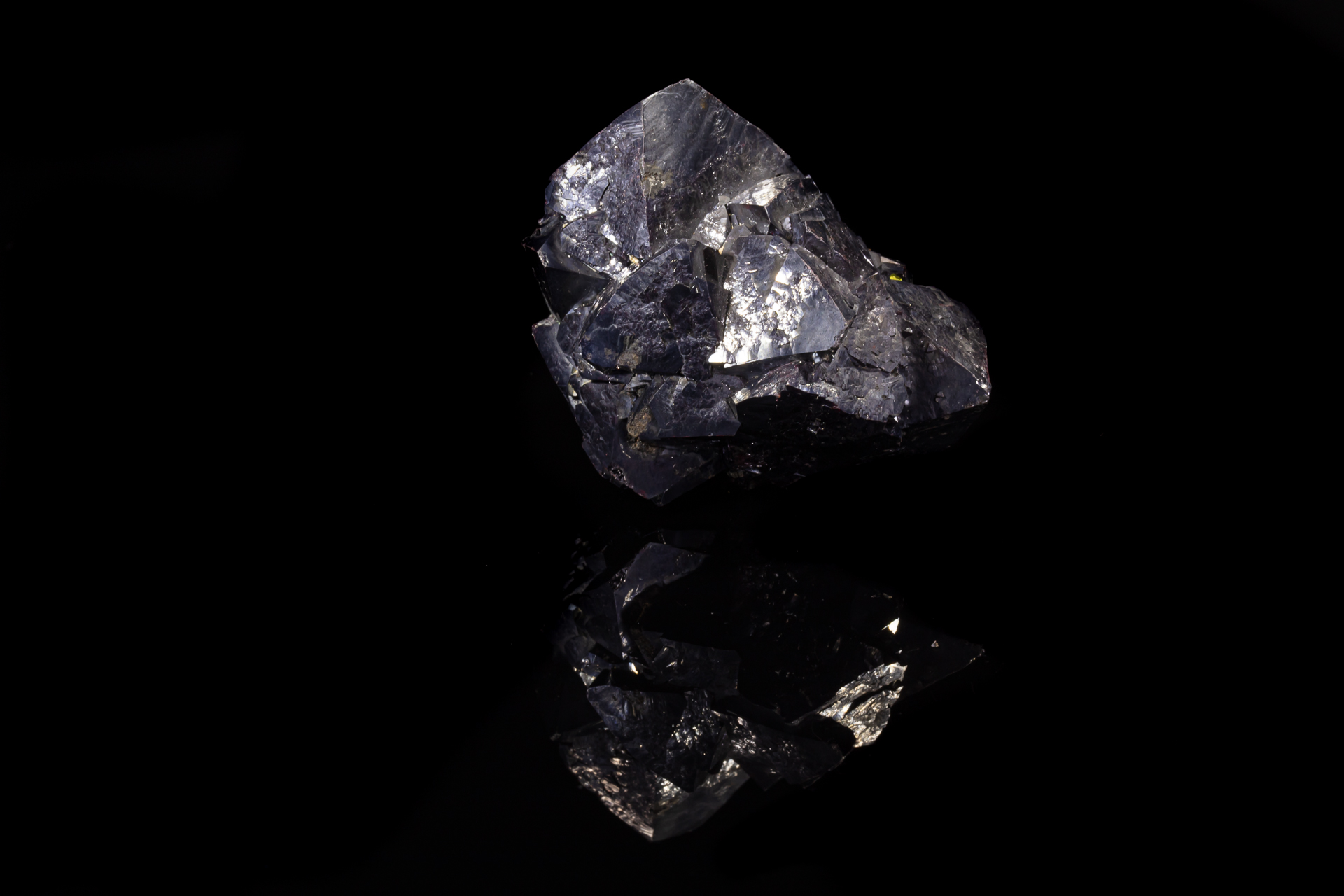Cuprite
Formula: Cu2O
Species: Oxides
Colour: Dark red to cochineal red, sometimes almost black.
Lustre: Adamantine, Sub-Metallic, Earthy
Hardness: 3½ – 4
Specific Gravity: 6.14
Crystal System: Isometric
Name: Named in 1845 by Wilhelm Karl von Haidinger from the Latin “cuprum,” in allusion to its composition. Haidinger renamed a previously known mineral that had been known by a wide variety of names.
Cuprite is commonly found as an oxidation product of copper sulphides in the upper zones of veins, often associated with Native Copper, Malachite, Azurite, Limonite and Chalcocite. A fibrous form of Cuprite is known as Chalcotrichite.
Though almost all crystals of cuprite are far too small to yield faceted gemstones, one unique deposit from Onganja in Seeis, Namibia, which was discovered in the 1970s, has produced crystals which were both large and gem quality. Virtually every faceted stone over one carat (0.2 g) in weight is from this single deposit, which has long since been mined out. The number of faceted gems over two carats (0.4 g) is difficult to estimate, but faceted cuprite of any size is considered one of the most collectible and spectacular gems in existence, with its deep garnet coloring and higher brilliance than a diamond. Only the gem’s soft nature prevents it from being among the most valuable jewelry stones.

 Copyright Charles Camarda - www.camardavisualstudio.com
Copyright Charles Camarda - www.camardavisualstudio.com
